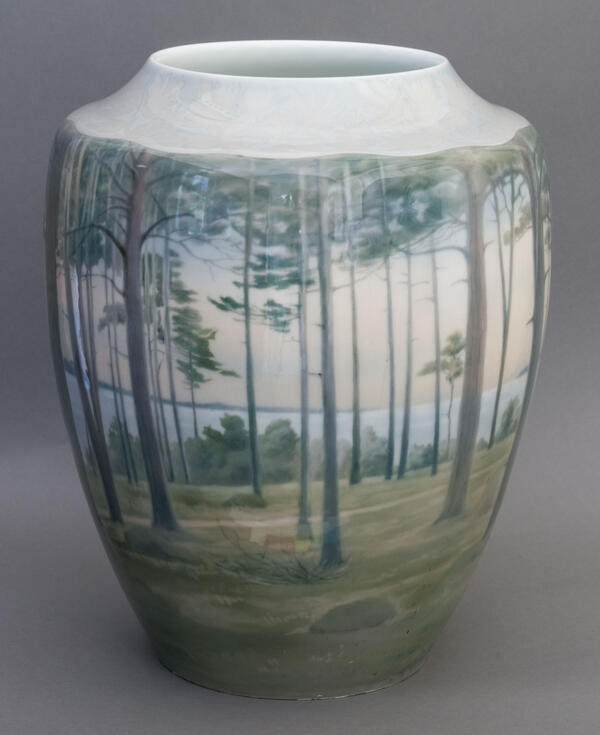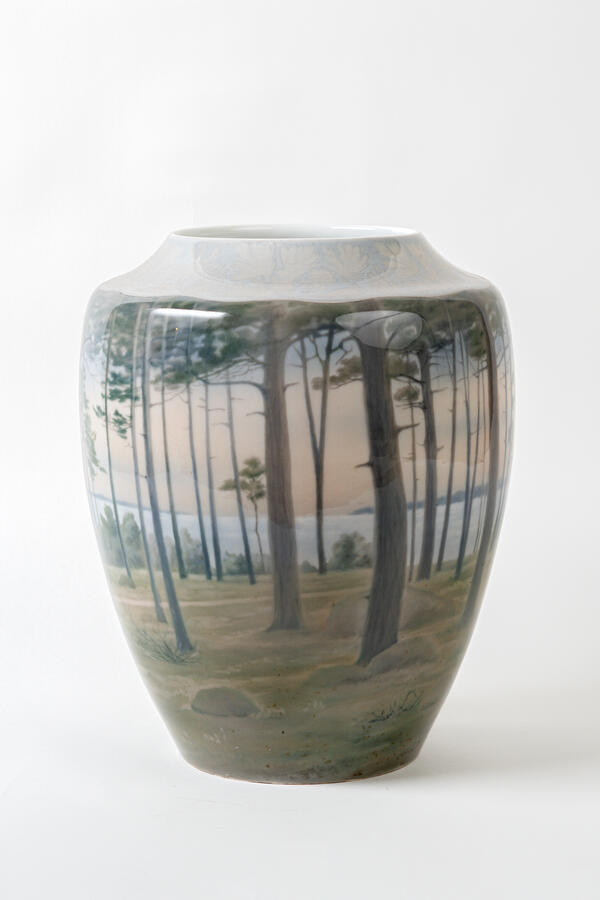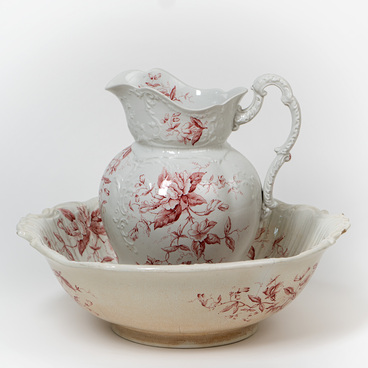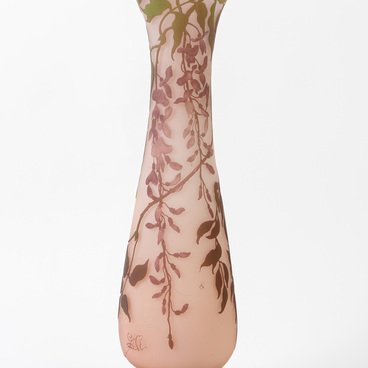The Alexander Palace collection includes unique vases with underglaze painting created at the Imperial Porcelain Factory between 1903 and 1912. The vases produced in this technique remained the core artistic product of the St. Petersburg factory throughout the entire Art Nouveau period. Their themes can be broadly divided into three main groups: landscape compositions, floral and plant motifs, images of birds and animals.
The development of underglaze painting at the Imperial Porcelain Factory was greatly influenced by the “Copenhagen method”, mastered by Russian craftsmen under the keen guidance of the leading artists of the Royal Danish manufactory K. F. Liesberg and K. L. Mortensen. As a result of this new decoration method on porcelain, the colors of the “big fire” when exposed to high temperatures, lose their intensity and become soft, gentle and subdued. It could not better meet the requirements of the “modern look” of the porcelain. While doing complex and interesting work, the artists of the Imperial Factory developed their own tradition of underglaze painting on porcelain, which is different from the Danish one both in composition and in stylistic approach to their works. This is mostly noticeable in landscapes. E.F. Hollerbach, one of the first porcelain researchers of this period, confirmed this fact:
The development of underglaze painting at the Imperial Porcelain Factory was greatly influenced by the “Copenhagen method”, mastered by Russian craftsmen under the keen guidance of the leading artists of the Royal Danish manufactory K. F. Liesberg and K. L. Mortensen. As a result of this new decoration method on porcelain, the colors of the “big fire” when exposed to high temperatures, lose their intensity and become soft, gentle and subdued. It could not better meet the requirements of the “modern look” of the porcelain. While doing complex and interesting work, the artists of the Imperial Factory developed their own tradition of underglaze painting on porcelain, which is different from the Danish one both in composition and in stylistic approach to their works. This is mostly noticeable in landscapes. E.F. Hollerbach, one of the first porcelain researchers of this period, confirmed this fact:




